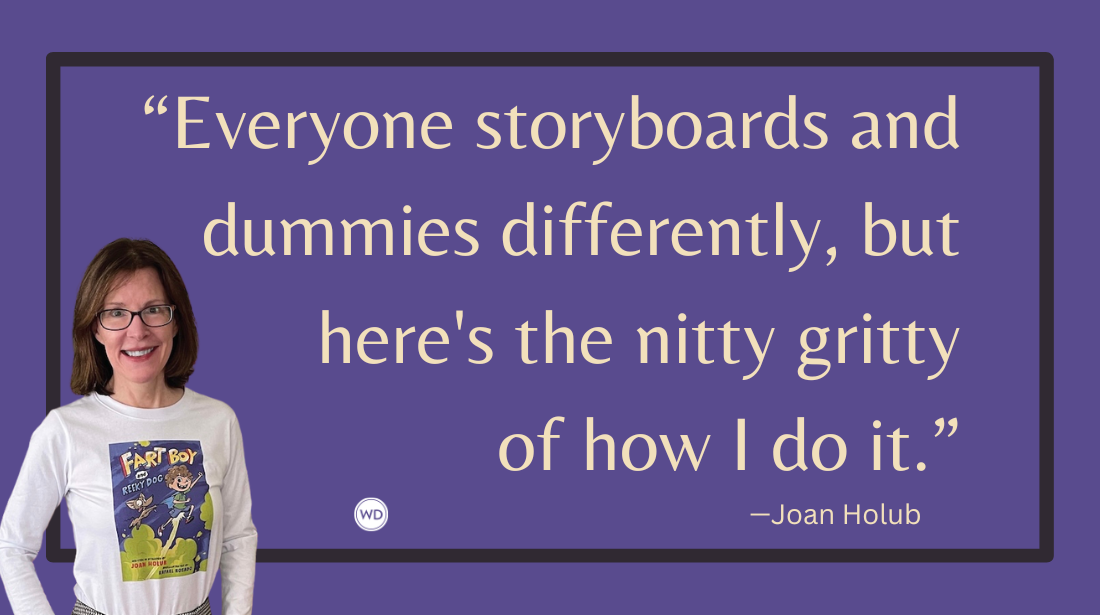The Four ‘R’s of Writing Characters of the Opposite Gender
As a female writer, it’s tough to create powerful male narrators. To do it you have to do a lot of preparation. Here are four methods to help simplify the process for you.
I’ve always enjoyed writing women characters, particularly women narrators. There’s an instinctive connection between us, a shared voice and vision. Once I’ve imagined my women narrators, I’m able to slip into their psyche. I understand where they’re coming from, and what they want. Most of all, I can feel in my bones the way a woman feels, whether it’s when she discovers that her best friend is having an affair, or when her husband is suddenly killed, or when she falls in love with a man she knows her family will never accept.
Order a copy of Chitra Banerjee Divakaruni's Before We Visit the Goddess.
Bookshop | Amazon
[WD uses affiliate links.]
Men, on the other hand, have been more of a mystery to me, and in the beginning I was satisfied depicting them through my women narrators. “Write what you know,” I said to myself, and for a while it worked well. But writing what we know, though a good rule for beginning writers, can become restrictive. Soon I wanted to challenge myself by writing novels from multiple perspectives. This is certainly the case in my latest novel, Before, We Visit the Goddess. In this book, which follows the lives of three generations of women, a grandmother, a mother, and a daughter, the women tell their stories, but often, being so close to their own lives, they only see one side of it. I felt it was important for the reader to see them, additionally, through the eyes of the men in their lives. This, I believed, would bring out a number of ironies in the book.
In order to create powerful male narrators, I had to do a lot of preparation. I used four methods: reading, research, recollection, and review.
1. Reading
First I examined the works of writers who I felt had done a good job depicting male characters – either in first person, or in close third person point of view. There is a long and venerable tradition of women depicting male heroes: Charlotte Brontë with Mr. Rochester, George Eliot (Mary Ann Evans) with Silas Marner or Adam Bede, and Jane Eyre with Mr. Darcy come to mind right away. In contemporary times, we have Annie Proulx with her searing story “Brokeback Mountain,” about the two gay cowboys, Jack and Ennis. Louise Erdrich’s Love Medicine has several memorable and poignant male narrators or point of view characters, such as the brothers Henry and Lyman Lamartine, and Lipsha Morrisey. Donna Tartt’s The Secret History is powerfully presented by Richard Papen, who confesses up front to being accessory to a murder. And the recent bestseller Gone Girl by Gillian Flynn has Nick, the sympathetic but not always trustworthy husband of the missing Amy, narrating half the novel. I read with pen in hand, underlining passages that seemed particularly insightful about the male mystique!
2. Research
After I finished reading, I embarked on a people-watching mission. I observed men at my place of work, in public places such as malls, airports, sports events and doctors’ offices. I took careful note of gestures and ways of communicating, and the kind of language men tend to use. Additionally, I talked to men whom I knew and asked them what they notice as they go through their day, what kinds of things annoy them, and how they deal with stressful or emotional situations. I also watched scenes from various movies, which were extremely helpful as I could observe (and re-watch, if necessary) different kinds of male characters in dramatic situations – a family fight, a life-threatening accident, a court battle, or a scene with a woman they love.
3. Recollection
Memory has always been a powerful writing tool for me, so I spent some time thinking about the men I have known – men in my family, men I went to college with, men I worked with or was emotionally involved with. I jotted down everything I could remember about their personality traits, life philosophies, and little quirks that had struck me as amusing or annoying. All of these helped me understand how men navigated life differently from women.
Below, I’ve listed some of the things I gathered and put into my book. Not all of this will apply to every man, obviously. But overall, they helped me create believable male characters.
I discovered that in general, men have a more developed sense of ego and will state their opinions more strongly and unapologetically, and be willing to argue about them, compared to women, who tend to begin many of their sentences with a gentler “I think” or “I believe.” Men are also more direct in saying what they mean. They talk a lot less than women and discuss their feelings a lot less, too. They are comfortable talking about general/world topics rather than personal ones. They often have difficulty apologizing or accepting blame. A lot of what they are thinking about a situation – especially a personal or emotional one – has to be inferred and might be expressed through action or gesture or a slight facial expression. Men often have a cut and dried problem-solution approach to things, and like to take charge of a problem situation and “solve” it, whereas women like to spend a good amount of time talking about a particular situation and how they feel about it. Men are highly sight-driven. Images, especially of women, have a strong impact on them, although (unlike women) they might not remember the details of clothing, jewelry, etc. And oh yes, they respond strongly to physical touch, something to keep in mind if you are planning to write romantic scenes!
Once I gathered all this information and started writing my characters, I kept in mind that each man ultimately, is an individual. To make my male characters unique and believable and interesting, it was important for me to go easy on typical gendered behavior and instead take into account their personal “history”: how they were brought up, family incidents or historical events that would have influenced them, their culture, their age, and ultimately, their particular relationships with the main women characters in my book, which would make them feel a certain way about these women, and behave in a certain way around. For instance, one of the men was orphaned early in life and brought up grudgingly in his uncle’s household. As a result, he tended to be suspicious of people’s motives, and not trust them – including his wife – when they claimed to love him.
4. Review
This was my final step. Once my first draft was done, I had a number of male readers and male writer friends read the draft, focusing specifically on the male narrators. I asked them to tell me if they found them convincing, or if there was anything about these characters that bothered them and made them feel that men would not act this way. Based on their feedback, I cut down on a lot of dialogue, especially when the male characters were explaining to the women how they felt about something, and replaced this with action. I also had to make my men less aware of the nuanced comments of the women!
The four Rs-- Reading, Research, Recollection and Review—helped me create male characters that were three-dimensional, complex and believable. Try them yourself next time when you feel like challenging yourself by stepping out of your narrative comfort zone.
Chitra Banerjee Divakaruni is the bestselling author of 17 books, including Before We Visit the Goddess, Oleander Girl, The Mistress of Spices, Sister of My Heart and more. Her work has been translated into 29 languages and has appeared in The New Yorker, The Atlantic Monthly, and The New York Times. She also has won an American Book Award. Born in India, she currently lives in Texas and is the McDavid professor of Creative Writing at the University of Houston. Visit her at chitradivakaruni.com.








